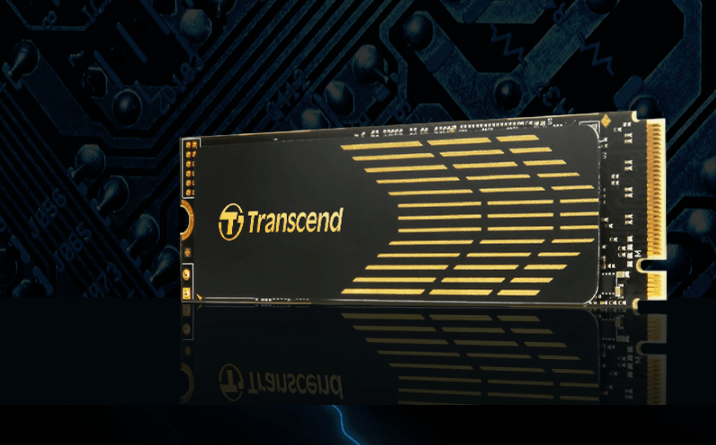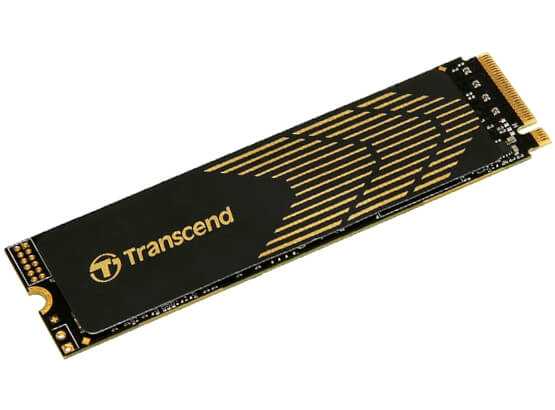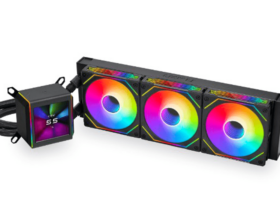Transcend 240S SSD Review. Let’s discover the positives and negatives of the newcomer NVMe PCI Express Gen4 from Transcend
Here it is Transcend 240S, the new SSD from the Taiwanese manufacturer which proposes a solution with full interface support PCI Express Gen4 x4, and seeks to position itself at the high end of the market.
This SSD NVMe 1.4 draws attention to a small detail, a heatsink made of graphene, an ultra-thin layer that has the task of dissipating memories and controllers in the best possible way. Transcend claims transfer speeds of up to 3,800MB / s read and 3,200MB / s write, we find out more in the full review, and especially if the promises have been kept

Design and features | Transcend 240S SSD Review
The SSD is based on memorie 3D NAND flash, and is of tipo 2280-D2-M dual-layer, so we have the classic dimensions of 80 mm x 22 mm x 3.58 mm. The memories are flanked by a processor capable of handling the NVMe PCIe Gen4 x4 protocol. Controller supporting 4 channels for the transfer. It also supports a bandwidth of 16 GT / s per lane, to make a comparison with PCIe 3.0 it reaches a maximum of 8 GT / s per lane.
It is available in memory cuts of 500 GB and 1 TB. Transcend for its new 240S SSD declares values of 1,700 TBW of Endurance for the top-of-the-range model, and 850 TBW for the 500 GB model. The SSD is able to function properly even in extreme temperatures, such as 0°C e 70°C.
Speaking of degrees, we introduce the heatsink that the company has chosen for its 240S SSD, one thin layer of graphene capable of responding to the need for limited space, and performance always constant. Interesting how more and more manufacturers are launching themselves into the use of this material. Transcend 240S PCIe SSD supports LDPC encoding (Low-Density Parity Check), l’ECC algorithm, and a thermal protection and limitation system, a technology that controls and monitors the temperature and controls the SSD to prevent damage and malfunction.

Our tests | Transcend 240S SSD Review
Before starting to talk about the tests carried out, here is our configuration used;
- Processor: Intel i5 10600K
- Motherboard: MSI Z490 Gaming Plus
- RAM: Corsair Vengeance RGB Pro SL 16 GB 3600 MHz
- Power supply: Enermax Triathlor ECO 650W
- Heatsink: Noctua NH-D15 chromax.Black
- Sistema Operativo: Windows 10 64-bit
We started from Atto Disk Benchmark. One of the best tools available for measuring storage performance. With ATTO we can test a sequence of 32 MB of 4 KB files, but also 32 MB in 1 MB files, the most important and difficult task for any storage drive, but also a very good indicator of quality.
If we look at the general behavior we notice certainly good performance overall, although certainly not at the top of its category. If we carefully observe the data obtained with 4 KB we notice an evident performance inconsistency, a sign that the controller suffers with the processing of these types of data. We have approx 478 MB / s in writing, e 108 MB / s read. Best with 1 MB files, with 2.97 GB / s writing, and 3.18 GB / s reading.
Let’s now turn to the famous and widespread CrystalDiskMark, which measures maximum theoretical sequential read / write performance with random data of various sizes. Below you will find the two tests we carried out, first checking the IOPS performance, then the sequential rate.
With files from 1MB we have 3251.88 IOPS in reading, and 3032.52 IOPS in writing. Sufficient performance for decent performance, but certainly not suitable for the most demanding. The test carried out to measure sequential performance confirms this. Where it shows mixed results with what was declared by their tests carried out on CrystalDiskMark and present on their site, even if the manufacturer extrapolates the tests as well as on previous benchmarks, even on Iometer
Conclusions and price
At the end of the day, the selling price is approximately € 129.90 for the 500 GB version. For those who do not have great needs and, you can find it on offer at a lower price, it could be interesting. Also due to the temperatures, which both during tests and in daily use, they were never high, and never marked high peak temperatures. Therefore the performance stability is not in doubt. That’s all for this review, to stay updated on the world of technology stay connected on our pages.
For those who have no special needs
Points in favor
- Graphene heatsink
- PCI Express Gen4 x4
Points against
- Just enough performance















Leave a Reply
View Comments